
The Airspeed AS.51 Horsa was a British troop-carrying glider used during the Second World War. It was developed and manufactured by Airspeed Limited, alongside various subcontractors; the type was named after Horsa, the legendary 5th-century conqueror of southern Britain.
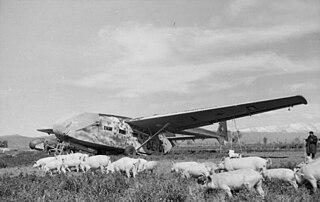
The Gotha Go 242 was a transport glider used by the Luftwaffe during World War II. It was an upgrade over the DFS 230 in both cargo/troop capacity and flight characteristics. It saw limited combat action. There were multiple glider variants, and it became the basis for a transport aircraft, the: Gotha Go 244.

The Slingsby Hengist was a British military glider designed and built by Slingsby Sailplanes Ltd. Like other British troop carrying gliders in the Second World War, it was named after military figures whose name began with H, in this case the Jute invader Hengist.

Military gliders have been used by the militaries of various countries for carrying troops and heavy equipment to a combat zone, mainly during the Second World War. These engineless aircraft were towed into the air and most of the way to their target by military transport planes, e.g., C-47 Skytrain or Dakota, or bombers relegated to secondary activities, e.g., Short Stirling. Most military gliders do not soar, although there were attempts to build military sailplanes as well, such as the DFS 228.
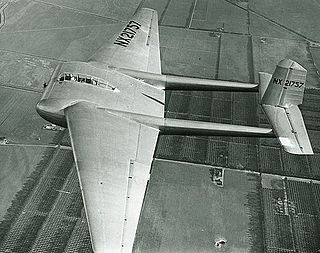
The XCG-16 was a military transport/assault glider ordered by the United States Army Air Forces (USAAF), from General Airborne Transport Co., for competition against the Waco CG-13A at Wright Field. The XCG-16’s preferred tow aircraft was the Lockheed Model 18 Lodestar.

The I.Ae. 25 Mañque was an Argentine assault troop/cargo glider designed at the Instituto Aerotecnico de Cordoba. The prototype was finished on 11 August 1945, flying only once before it was cancelled. Its structure was constructed with Argentine woods mañio, araucaria and guatambú.
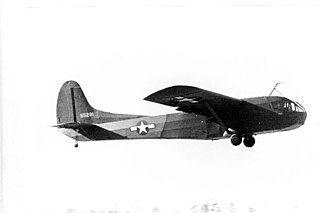
The Waco CG-15 was an American military glider, which was developed from the CG-4. Although outwardly similar to its predecessor and carrying the same number of passengers, a number of changes in the design, including shortened wings and a more streamlined nose enabled it to travel faster. 1,000 were ordered and 473 were delivered before production ceased. Two were transferred to the Navy for testing as the XLR2W-1. One unit was converted into an XPG-3 powered glider which used two Jacobs R-755-9 radial engines.

After the success of the 1940 airborne assaults involving the DFS 230, the Reichsluftfahrtministerium invited the Deutsche Forschungsanstalt für Segelflug/DFS and Gotha to submit plans for a larger capacity glider. The result was the DFS 231, a twenty-seat troop designed by Hans Jacobs, who had previously produced the successful, nine seat DFS 230.
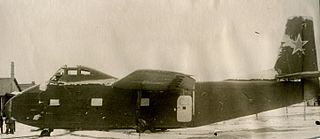
The Yakovlev Yak-14 was the largest assault glider ever to enter service with the Soviet Air Force. It was introduced in 1949, at a time when other air forces were abandoning the glider concept. In 1950 a Yak-14 became the first glider to fly over the North Pole.

The Waco CG-4 was the most widely used American troop/cargo military glider of World War II. It was designated the CG-4A by the United States Army Air Forces, and given the service name Hadrian by the British.

The Chase XCG-18A and YC-122 Avitruc was a military transport aircraft designed by Chase Aircraft and produced in limited numbers in the United States in the late 1940s, initially as a glider, but definitively in powered form. The design was based on the CG-14 cargo glider but was substantially larger and featured all-metal construction. It was a high-wing cantilever monoplane. The fuselage was of rectangular cross-section and featured a loading ramp at its rear. The main undercarriage units were carried at the sides of the fuselage and were fixed, while the nosewheel was retractable. In its powered form, two radial engines were fitted in nacelles in the wings.

The Douglas XCG-17 was an American assault glider, developed by the conversion of a C-47 Skytrain twin-engine transport during World War II. Although the XCG-17 was successfully tested, the requirement for such a large glider had passed, and no further examples of the type were built; one additional C-47, however, was converted in the field to glider configuration briefly during 1946 for evaluation, but was quickly reconverted to powered configuration.

The Waco CG-13 was an American military transport glider aircraft developed during World War II.
The St. Louis CG-5 was a 1940s American prototype military transport glider designed and built by the St. Louis Aircraft Corporation.
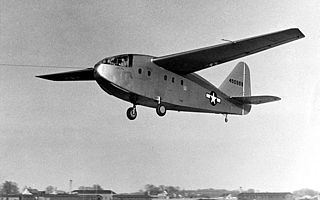
The Chase CG-14, also known as the G-14 or Model MS.1, was an assault glider manufactured by Chase Aircraft for the United States Army Air Forces during the Second World War. The aircraft failed to progress beyond the prototype stage, being overtaken by larger, improved glider designs.
The Bowlus CG-8 was a prototype Second World War American transport glider to be built for United States Army, one was built but the type did not enter production and the programme was cancelled.
The Bowlus CG-7 was a prototype Second World War American transport glider to be built for United States Army, one was built but the type did not enter production and the programme was cancelled.
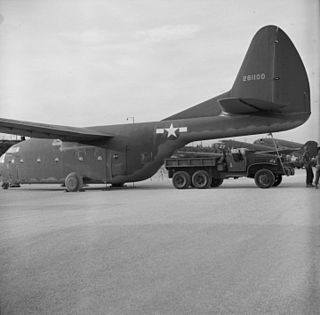
The Laister-Kauffman CG-10 was an American military transport glider aircraft developed during World War II.
The Douglas CG-19 was a late 1940s assault glider project conceived by the Douglas Aircraft Company.














